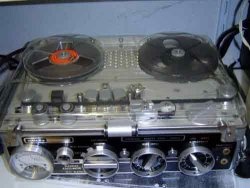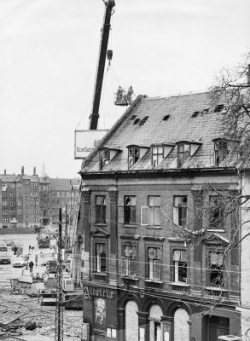Telephone Tapping According to the DSIS Commission
19. Nov. 2009
The PET Commission was appointed in 1999 to scrutinize the activities of the DSIS during the years 1945-89. The purpose was simply to investigate if the intelligence service had observed democratic rules and constitutional rights and, consequently, the commission consisted of an almost equal number of historians and jurists. For almost 10 years they were perusing huge heaps of classified documents and questioning as well the management as employees of the DSIS. The result was a very readable and clear presentation, which can be downloaded from the internet free of charge; a great and fascinating view of a period of high political tension in Danish history.
Link to homepage from where the report can be downloaded
Interference in the Secret of Communication
Volume 4 of the report deals with the operational tools of the DSIS and goes through the service's use of telephone tapping, collection of "telephone information" (about a person's calls, to whom and when), letter opening, suspension of letters, searches, and bugging in a more than 100 pages long chapter about "technical operational tools". Focus is naturally on the question whether the DSIS was acting in accordance with the law and obtained valid warrants for the many cases of "interference in the Secret of Communication".
In the heavy volume 15 the development within the legislation in this area is described. Altogether the Commission makes it appear that by and large the intelligence service stayed on the straight and narrow path when it came to surveillance of communication. At the same time the report contains a lot of interesting information e.g. about the involvement of the KTAS (the Copenhagen Telephone Company Ltd.) in the surveillance and about the target groups which the surveillance was especially aimed at.

Nagra Tape Recorder, which is mentioned by the DSIS commission. It is, however, uncertain whether exactly this model, Nagra (type III), was used for surveillance. The use of tape recorders began in 1954 and strengthened the telephone monitoring as it became more precise than the hastily scrawled summaries by the telephone tappers of former times and because it constituted far stronger evidence.
Growing Telephone Tapping
At the beginning of the period the intelligence service only had a few telephone tapping installations at their disposal. The many monitoring desks used by the Germans and the Danish authorities during the occupation had been dismantled, and in 1952 the DSIS disposed of just four tapping lines besides a few lines at the Copenhagen Police which they could borrow.
In 1954, the tapping was revolutionized by the introduction of tape recordings which facilitated the work and strengthened the production of evidence. During the next two decades the number of tapping lines and tapping operations increased, however, slowly. In 1967, for instance, the service listened in on 30 telephone conversations only. About this time the DSIS had 30 telephone tapping lines at the police headquarters. Ten years later the number of lines as well as tapping operations had almost doubled and the capacity multiplied. The tapping reached its peak in 1986 when 374 tapping operations were instigated. During the entire period, it was, however, a limited apparatus which the DSIS could use compared with the larger Swedish and Norwegian intelligence services.

In the 1980’s the DSIS spent many resources monitoring the autonomic ”Squatter Movement” revolting against the authorities by occupying houses. Their mail and especially telephone conversations were monitored and bugging was established. The clearing of the occupied house, Allotria, in Copenhagen in 1983 won fame as the squatters had clandestinely dug a tunnel under Korsgade enabling them to escape when the police arrived. They left a banner with the text, ”We decide when to fight”. © Polfoto.
The Monitored
Telephone tapping was often afflicted by run-down and poor materiel, and moreover, it was enormously time-consuming - from one hour's tape recording it took typically six-seven hours to work up relevant information and, consequently, the DSIS were often short of personnel to benefit from the tapping. Nevertheless, particularly the left wing developed a "cloud of myths" about telephone tapping, clicking sounds, etc., as former head of the DSIS Jørn Bro put it.
According to the Commission far the largest part of the monitoring applied to persons from the Communist regimes in the east and Danes suspected of illegal collaboration with the East Bloc. A minor part of the monitoring applied to persons suspected of terrorist activities or connection with terrorist groups abroad - e.g. the members of the Blekingegade gang were regularly monitored during the period 1979-89.
The DSIS also monitored persons and groups suspected of planning disturbances - e.g. the autonomic "squatter movement" or even large parts of the labour movement which made use of blockades and other "illegal forms of action" in the 80's. Finally, certain "political-ideological" left wing groupings were monitored due to suspicion that they might participate in disturbances. This applied to e.g. the theatrical group "Solvognen" from Christiania (best known for their Father Christmas action in the Magasin department store) and a section of the Danish Communist Party in Silkeborg.
The DSIS was well aware that telephone tapping might easily become a pretext for doing nothing as contrary to the use of agents it was not dangerous. At several meetings about 1980 head of the DSIS Ole Stig Andersen criticized the service of being too one-sided and unimaginative in its choice of operational tools. As mentioned above, it took long to analyze telephone tapping and with the widespread paranoia in the monitored environments, the monitored people rarely disclosed any big secrets. Nevertheless telephone tapping made an important contribution to the intelligence service's knowledge of external and internal "enemies".
Lapse of Memory?
An internal note of 12th July 1968 contains a list of fifteen employees of the KTAS, "presumably the DSIS' contacts in the company" - as well as a procedure according to which the intelligence service could order "legal" or "illegal" telephone tapping from the technicians of the telephone company.
The word "illegal" is, of course, interesting. The illegal tapping had to be ordered via a managing clerk in the telephone company who passed on the order via his head of department to a telephone master and a senior telephone fitter. It lies near at hand to interpret the word "illegal" as "unlawful", i.e. telephone tapping without a warrant. But this, the Commission writes, contradicts a number of oral statements from as well DSIS as KTAS people. "Moreover, there has been found no trace of such tapping in the perused material". Here it may be tempting to ask oneself a simple question: In cases of really unlawful tapping, would it then be likely that the DSIS would keep traces of these in their archives - or that anybody would be able to remember anything about them? When questioned by the Commission the actors testified under penalty of the law, i.e. they would be held responsible for any unlawful act, and this has subsequently been criticized because it is hardly probable that this approach had a stimulating effect on the respondents' memory.
Is it possible that the solitary note is a "slip" which was kept by mistake? The DSIS Commission mentions examples from abroad that particularly sensitive monitoring, e.g. of politicians, could take place illegally, with no warrant and with blurring of the names in the registration. But it concludes on the basis of evidence that "the most probable explanation seems to be that it had to do with bugging which was only legalized in 1972", and for which the service also used KTAS technicians. If that is the case, posterity may consider if this was any better than illegal telephone tapping. We still have no clear answer to the question about the lawfulness of Danish telephone tapping during the cold war.
This article may be copied or quoted with MuseumsPosten, Post & Tele Museum as source.
Comment this article
Only serious and factual comments will be published.